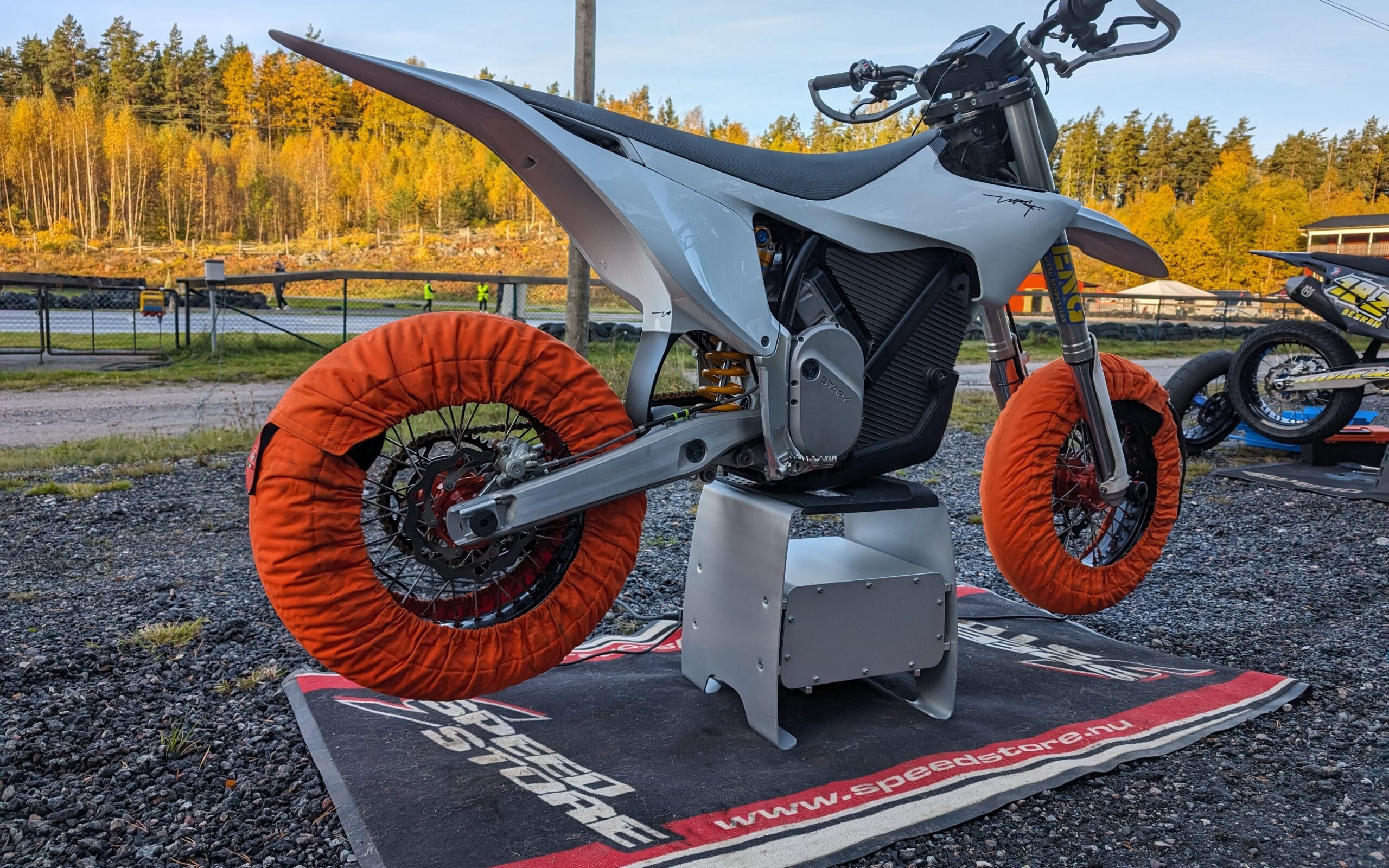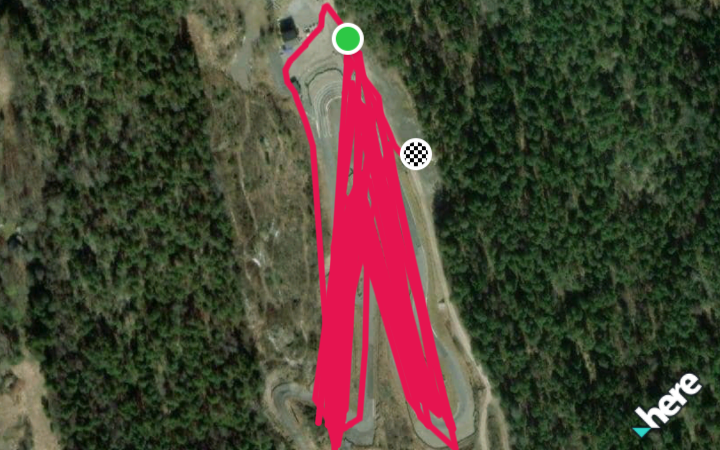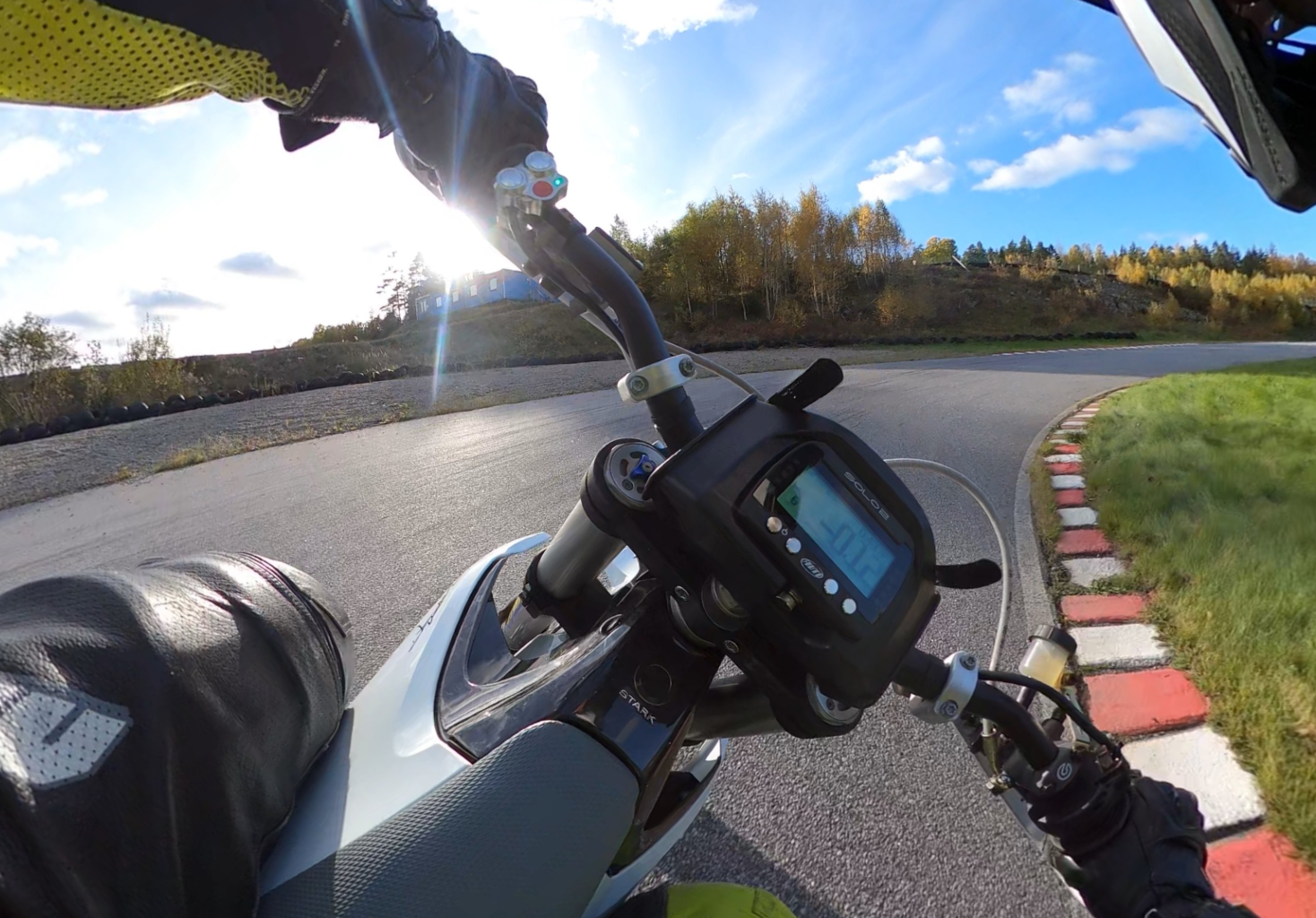Table of Contents
The intro
Back in december of 2021, Stark Future announced the Stark Varg electric MX bike. The specs looked pretty good and they were asking for a 1000 SEK (~100USD) pre-order down payment to secure your spot in the que.
So we did.
Now, almost 2 years later, the bike has finally arrived. It has been delayed a couple of times and there´s also been some small changes to the bike since the launch.
| | Main specs at launch | Specs of the delivered bike |
| Power | 80hp/938 Nm | 80hp/938 Nm |
| Weight | 110 kg | ~118 kg |
| Battery capacity | 6 kWh | 6,5 kWh |
| Mobile app | Mobile app | Mobile app locked to the phone that´s delivered with the Varg |
Most of you already know about the delays and problems that the Stark team are working with. So let´s not dwell on that and let´s just focus on the bike.
118 kg isn´t as heavy as it seems. A 2023 Husqvarna FC450 weighs in at 102,8 kg without fuel. With a full tank of gas that weight goes up to 110 kg. So the Varg is only 8 kg heavier.
Lifting the Varg on- and off the stand confirms that the bike feels almost as light as any other bike we´ve hoisted up on stands. The difference is there, but it´s nothing major.
Late in the development phase, The Stark team increased the battery from 6,0 kWh to 6,5 kWh.

But, will it supermoto?
Supermotos are built from dirtbikes. There are small modifications we can do to get the bike into track configuration. And then there are bigger mods if you want to take it racing. So let´s have a look at the specs of the bike and compare it to another bike that is commonly adapted for supermoto
Let´s compare some chassies measurements shall we?
| | Stark Varg MX | Husqvarna FC 450 |
| Rake | 26,5 degr | 26,5 degr |
| Offset triple | 22mm | 22mm |
| Offset fork feet | 33mm | 32mm |
| Total offset | 55mm | 54mm |
| Normal trail | 104,1mm | 105,7mm |
| Fork length | 950mm | 940mm |
| Shock length | 475mm | 477mm |
| Rear linkage ratio, starting point | 3:1 | 2,85:1 |
| Front sprocket | 14 | 13 |
| Rear sprocket | 48 | 49 |
The Varg in stock form is a pretty close match to a Husqvarna FC450 apart from the linkage. The linkage on the Varg has a softer ratio. This means that the rear of the bike will move more than a FC450, assuming that the same spring rate is being used on both bikes. It´s a softer set-up.
Rake and offset is close to the same. And the KTM/Husqvarna triples will fit.
A track setup will need stiffer springs, adjusted lengths of the suspension and different offsets to make the bike handle as intended. Since supermoto happens more on the tarmac than on the dirt, we want our bikes to be closer to a crotch-rocket than an MX-bike. We might also want change our linkage ratio by changing out the triangle and pull-rod, this will stiffen up the rear slightly and with the increase in spring rate we should get a bike that can maintain it´s geometry through the entire lap.
So in order to supermoto the Varg we talked to Eng Racing and he helped us set up a rear Öhlins shock and adapt our WP 2-chamber forks. We went with this set-up because the Öhlins could be ordered before the bike arrived and the forks were pulled from our existing KTM SMR 2013.
Using a special set of triples (previously used on the SMR) we we´re able to get the offset down to a total of 38mm. The low triple offset does limit the steering angle from left to right so a larger offset in the triples is probably going to be a good idea. There´s more to front end stability than just trail. But as a base setting, we´re going to be testing a trail in the range of 84 – 94mm.
This was a setting that we felt would be a good starting point to asses the bikes handling and then decide what direction to go for next year.
The testrides
So what did we learn from riding the Varg?
We had one single day to test it out and since we are in Sweden, we only had about 10 degr celsius during the day. Not ideal conditions for slick tyres.
The purpose of the test was mainly to get a feel for Varg and see if our initial thoughts was in the ball park or if we needed to rethink something.
Session 1, 55hp, 80% Engine brake
The first thing we noticed was the torque from down low. Coming out of corners, it´s actually really difficult to roll on the power smoothly. Most of the times when we´d start cracking the throttle open the bike would just jump forward. Getting through the chicane in the downwards part of the track caused the bike to see-saw front to back from the throttle being opened, closed and opened again. Not as smooth as an ICE-bike.
Testing the engine braking along with rear brake turned out to be problematic. When you roll off the throttle the engine brake gets engaged. The engine brake itself is pretty smooth, until you start using the rear brake. As soon as the rear brake overpowers the engine brake the electronics thinks that you are moving slower than what you actually are. So the engine brake increases. And it doesn´t react fast enough when you release the brake. So the rear keeps sliding even when you´ve decided that it´s time to stop braking.
Going from the 50hp mode to the 60 hp mode was a clear increase in power. But it seemed that there wasn´t any difference between 60-70-80hp. We have reached out to Stark regarding this and they are working on the issue.
The bike has a lot of torque in the lower revs. The engine increases in revs faster than anything we´ve ridden before. Once you´re out of the corner the bike will start to pull you away from the rider behind you without any problems. If you´re trying to overtake a Varg, make sure you do it going into the corners and then make yourself as wide a possible.
Session 2, engine brake testing
In order to get the rear of the bike to behave in a manner that we could anticipate, we tried turning all of the engine brake off, setting it to 0%.
This worked well, through the corners.
Going down the straight at a little over 110 kph and rolling of the throttle however created a different experience. It seems that the system has some sort of over-rev protection. When the throttle went to 0% at high revs it decided that the engine was reving too much and wanted to rectify that in an extremely rude manner. The rear wheel locked up for a split second and the bike shook about before stabilizing again. Highly unexpected and not something that makes you feel confident going into corners.
Session 3, getting warmed up
Having gotten a feel for the bike and how it behaved we set the engine brake at 60% and decided not to use the rear brake. We managed to use the throttle a little bit better out of corners and started to feel how easily the bike flicks from side to side. We set the bike up with a trail number on the larger/safer side. But the bike still feels easy to turn. That lack of rotating mass really does make a difference.
Session 4, battery usage
The fourth session was a little bit longer at 12 laps, ~9min active riding. This is a track that uses a lot of power going from 100% throttle to full brake in slow corners and then back to 100% throttle four times a lap. So the battery usage was pretty rough.
During those 12 laps we used 41% of battery. If we were to do a race on this track that would include the dirt section which extends the laptimes from ~41 sek to ~1 min. The open class runs 14 laps while the Swedish Championship completes 16 laps.
So for this bike to be able to race the full season in the open championship, we need 60-75min of charging between session.
Maybe some sort of a rule change could be implemented to achieve this?
The display/mobile phone
Adjusting the drivetrain happens in the Stark app that is only available in the supplied phone that is supposed to be mounted on the handlebars. The phone will then act as a display showing battery, power-mode and speed.
The GPS in the phone seems to be a 1hz or slower. This means that the timing on a closed circuit will not be accurate enough. For enduro riding it may be fine.
Not that the Varg phone comes with a timing function.

An example of the long updating frequency of the Stark Varg phone GPS.
We removed the phone and mounted the AIM SOLO 2 instead. A device more suited for timing and actual riding. But as it turns out, if the phone isn´t connected to the bike via bluetooth when you´re riding, you don´t get to see the data from that session. This forced us to ride with the phone inside of our leathers since we wanted that data. Not a great solution.
And if we aren´t riding/using the bike in 2-4 days, the battery of the phone will be discharged.
Stark claims that the phone is a fully functional smart phone. Sure, it is. But it´s an older gen Blackview BV6300, released back in 2020, that runs on Android 11. The latest Pixel 8 runs at Android 14. So it´s basicly useless as a phone. It´s pretty close to being useless as a display for riding aswell. It´s just more hassle than we´d like with having to keep it charged.
So let´s hope that the Stark team releases the app to all phones so we can all just use the phone we already have, and maybe get a small display on the handlebar for battery %?
This was the first part of our Varg-series. Next time we´ll dig into the power of the bike and maybe even bring it to a Dyno and compare some torque numbers.
This post is also available in: Svenska



